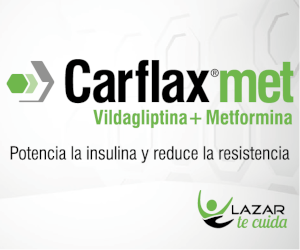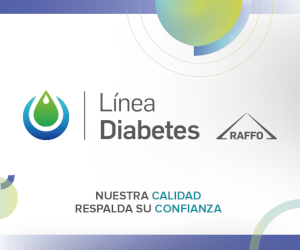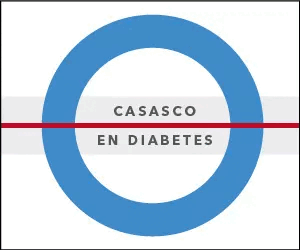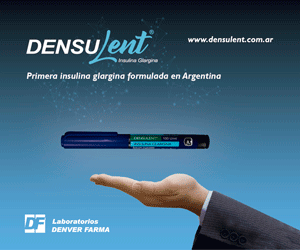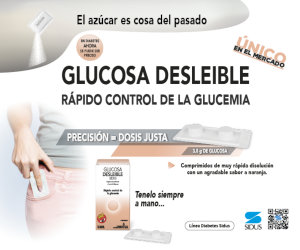Relationship between body mass index and maternal circulating fatty acid levels as predictors of the presence of fetal macrosomia
DOI:
https://doi.org/10.47196/diab.v56i2.515Keywords:
free fatty acids, pregnancy, macrosomiaAbstract
Introduction: neonates with high birth weight are at increased risk of birth complications and long term health problems. An unexplored factor during gestation is the level of circulating fatty acids.
Materials and methods: prospective study where women were studied during pregnancy until delivery. Anthropometric variables and free fatty acid measurements were analyzed between 24-28 weeks of gestation.
Results: we included 27 patients, of whom 4 (13.8%) gave birth to macrosomic newborns. Patients were grouped according to pre- regnancy mass index (BMI) into normal weight and overweight or obese. Macrosomic neonates corresponded to the group of overweight and obese mothers, who also presented a significant increase in free fatty acid levels (2067 uM, ICC: 947,5-1590 vs 1212 uM, ICC: 13367-2247; p<0.05) was found in the obese and overweight group. Basal and post oral glucose tolerance test showed no differences, Multivariate analysis showed that being obese or overweight at the beginning of pregnancy results in an OR of free fatty acids 1,0023 (95%CI: 1,0000-1,0046), while oral glucose tolerance test presented an OR: 1,0186 (95%CI: 0,9645-1,0756).
Conclusions: the results show the role of pre-gestational BMI on the risk of having macrosomic children, confirming the need to improve the nutritional status of women before and during pregnancy
References
I. Gaudet L, Ferraro ZM, Wen SW, Walker M. Maternal obesity and occurrence of fetal macrosomia: a systematic review and meta-analysis. Biomed Res Int 2014 Dec 7;2014:640291.
II. Fang F, Zhang Q-Y, Zhang J, Lei X-P, Luo Z-C, Cheng H-D. Risk factors for recurrent macrosomia and child outcomes. World J Pediatr 2019 Jun;15(3):289-96.
III. Hofstee P, McKeating DR, Bartho LA, Anderson ST, Perkins AV, Cuffe JSM. Maternal selenium de ciency in mice alters offspring glucose metabolism and thyroid status in a sexually dimorphic manner. Nutrients 2020 Jan 20;12(1).
IV. Boulet SL, Salihu HM, Alexander GR. Mode of delivery and birth outcomes of macrosomic infants. J Obstet Gynaecol 2004 Sep;24(6):622-9.
V. Akanmode AM, Mahdy H. Macrosomia. Stat Pearls, Treasure Island (FL): Stat Pearls Publishing; 2021.
VI. Beta J, Khan N, Khalil A, Fiolna M, Ramadan G, Akolekar R. Maternal and neonatal complications of fetal macrosomia: systematic review and meta-analysis. Ultrasound Obstet Gynecol 2019 Sep;54(3):308-18.
VII. Huang RC, Burke V, Newnham JP, Stanley FJ, Kendall GE, Landau LI, et al. Perinatal and childhood origins of cardiovascular disease. Int J Obes (Lond) 2007 Feb;31(2):236-44.
VIII. Wang D, Hong Y, Zhu L, Wang X, Lv Q, Zhou Q, et al. Risk factors and outcomes of macrosomia in China: a multicentric survey based on birth data. J Matern Fetal Neonatal Med 2017 Mar;30(5):623-7.
IX. Lewandowska M. The role of maternal weight in the hierarchy of macrosomia predictors; overall effect of analysis of three prediction indicators. Nutrients 2021 Feb 28;13(3).
X. Barker DJ, Fall CH. Fetal and infant origins of cardiovascular disease. Arch Dis Child 1993 Jun;68(6):797-9.
XI. Barker DJ, Martyn CN, Osmond C, Hales CN, Fall CH. Growth in utero and serum cholesterol concentrations in adult life. BMJ 1993 Dec 11;307(6918):1524-7.
XII. Vinturache AE, Chaput KH, Tough SC. Pre-pregnancy body mass index (BMI) and macrosomia in a Canadian birth cohort. J Matern Fetal Neonatal Med 2017 Jan;30(1):109-16.
XIII. Dai R-X, He X-J, Hu C-L, Maternal pre-pregnancy obesity and the risk of macrosomia: a meta-analysis. Arch Gynecol Obstet 2018 Jan;297(1):139-45.
XIV. Vats H, Saxena R, Sachdeva MP, Walia GK, Gupta V. Impact of maternal pre-pregnancy body mass index on maternal, fetal and neonatal adverse outcomes in the worldwide populations: A systematic review and meta-analysis. Obes Res Clin Pract 2021 Dec;15(6):536-45.
XV. He X-J, Qin F-Y, Hu C-L, Zhu M, Tian C-Q, Li L. Is gestational diabetes mellitus an independent risk factor for macrosomia: a meta-analysis? Arch Gynecol Obstet 2015 Apr;291(4):729-35.
XVI. Usta A, Usta CS, Yildiz A, Ozcaglayan R, Dalkiran ES, Savkli A, et al. Frequency of fetal macrosomia and the associated risk factors in pregnancies without gestational diabetes mellitus. Pan Afr Med J 2017 Feb 2;26:62.
XVII. Herrera E, Ortega-Senovilla H. Maternal lipid metabolism during normal pregnancy and its implications to fetal development. Clin Lipidol 2010 Dec;5(6):899-911.
XVIII. Álvarez JJ, Montelongo A, Iglesias A, Lasunción MA, Herrera E. Longitudinal study on lipoprotein pro le, high density lipoprotein subclass, and postheparin lipases during gestation in women. J Lipid Res 1996 Feb;37(2):299-308.
XIX. Duttaroy AK. Transport of fatty acids across the human placenta: a review. Prog Lipid Res 2009 Jan;48(1):52-61.
XX. Lewis RM, Desoye G. Placental lipid and fatty acid transfer in maternal overnutrition. Ann Nutr Metab 2017 Mar 17;70(3):228-31.
XXI. Boden G, Chen X, Ruiz J, White JV, Rossetti L. Mechanisms of fatty acid-induced inhibition of glucose uptake. J Clin Invest 1994 Jun;93(6):2438-46.
XXII. Jensen MD, Haymond MW, Rizza RA, Cryer PE, Miles JM. In uence of body fat distribution on free fatty acid metabolism in obesity. J Clin Invest 1989 Apr;83(4):1168-73.
XXIII. Boden G, Cheung P, Stein TP, Kresge K, Mozzoli M. FFA cause hepatic insulin resistance by inhibiting insulin suppression of glycogenolysis. Am J Physiol Endocrinol Metab 2002 Jul;283(1):E12-9.
XXIV. Catalano PM, Kirwan JP, Haugel-de Mouzon S, King J. Gestational diabetes and insulin resistance: role in shortand longterm implications for mother and fetus. J Nutr 2003 May;133(5 Suppl 2):1674S-1683S.
XXV. Obesity and overweight (Internet). Citado: 09/12/21. Disponible en: https://www.who.int/news-room/fact-sheets/detail/obesityand-overweight.
XXVI. Monasta L. Maternal height should be considered in the evaluation of macrosomia related risk of infant injuries at birth. Acta Obstet Gynecol Scand 2011 Feb;90(2):198; author reply 198-9.
XXVII. Marshall NE, Biel FM, Boone-Heinonen J, Dukhovny D, Caughey AB, Snowden JM. The association between maternal height, body mass index, and perinatal outcomes. Am J Perinatol 2019 May;36(6):632-40.
XXVIII. Araujo Júnior E, Peixoto AB, Zamarian ACP, Elito Júnior J, Tonni G. Macrosomia. Best Pract Res Clin Obstet Gynaecol 2017 Jan;38:83-96.
XXIX. Villafan-Bernal JR, Acevedo-Alba M, Reyes-Pavon R, Díaz-Parra GA, Lip-Sosa DL, Vázquez-Del n HI, et al. Plasma levels of free fatty acids in women with gestational diabetes and its intrinsic and extrinsic determinants: systematic review and meta-analysis. J Diabetes Res 2019 Aug 18;2019:7098470.
XXX. Denguezli W, Faleh R, Fessi A, Yassine A, Hajjaji A, Laajili H, et al. Risk factors of fetal macrosomia: role of maternal nutrition. Tunis Med 2009 Sep;87(9):564-8.
XXXI. Vrijkotte TGM, Algera SJ, Brouwer IA, van Eijsden M, Twickler MB. Maternal triglyceride levels during early pregnancy are associated with birth weight and postnatal growth. J Pediatr 2011 Nov;159(5):736-742,e1.
XXXII. Di Cianni G, Miccoli R, Volpe L, Lencioni C, Ghio A, Giovannitti MG, et al. Maternal triglyceride levels and newborn weight in pregnant women with normal glucose tolerance. Diabet Med 2005 Jan;22(1):21-5.
XXXIII. Kitajima M, Oka S,Yasuhi I, Fukuda M, RiiY, IshimaruT. Maternal serum triglyceride at 24-32 week's gestation and newborn weight in nondiabetic women with positive diabetic screens. Obstet Gynecol 2001 May;97(5 Pt 1):776-80.
XXXIV. Mossayebi E, Arab Z, Rahmaniyan M, Almassinokiani F, Kabir A. Prediction of neonates’ macrosomia with maternal lipid pro le of healthy mothers. Pediatr Neonatol 2014 Feb;55(1):28-34.
XXXV. Geraghty AA, Alberdi G, O’Sullivan EJ, O’Brien EC, Crosbie B, Twomey PJ, et al. Maternal and fetal blood lipid concentrations during pregnancy differ by maternal body mass index: ndings from the ROLO study. BMC Pregnancy Childbirth 2017 Oct 16;17(1):360.
XXXVI. Yu M, Wang W, Wang H. The late-gestational triglyceride to high-density lipoprotein cholesterol ratio is associated with neonatal macrosomia in women without diabetes mellitus. Int J Endocrinol 2020 Jun 19;2020:7250287.
Downloads
Published
How to Cite
Issue
Section
License
Copyright (c) 2022 on behalf of the authors. Reproduction rights: Argentine Diabetes Society

This work is licensed under a Creative Commons Attribution-NonCommercial-NoDerivatives 4.0 International License.
Dirección Nacional de Derecho de Autor, Exp. N° 5.333.129. Instituto Nacional de la Propiedad Industrial, Marca «Revista de la Sociedad Argentina de Diabetes - Asociación Civil» N° de concesión 2.605.405 y N° de disposición 1.404/13.
La Revista de la SAD está licenciada bajo Licencia Creative Commons Atribución – No Comercial – Sin Obra Derivada 4.0 Internacional.
Por otra parte, la Revista SAD permite que los autores mantengan los derechos de autor sin restricciones.













